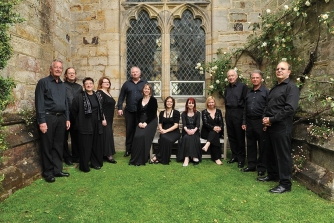Details
Mayfield School Chapel
High Street
Mayfield
East Sussex
TN20 6PH
England
Programme
Giovanni Pierluigi da Palestrina – Magnificat no.1
Olivier Messiaen – La Nativite du Seigneur: Desseins Eternels
Gustav Holst – Nunc Dimittis, H.127
Performers
Mayfield Consort
Other concerts in this Series (+)
Programme Note
Since its genesis two thousand years ago, the Church has reflected the changing seasons and the passage of time throughout the day within its liturgy. The eight medieval offices were linked to a specific time of day: Matins in the middle of the night; Lauds at daybreak, Prime, Terce, Sext, and None at the first, third, sixth and ninth hours of the day respectively; Vespers before dusk; and Compline at nightfall. The evening services are the most substantial, and the ones for which most polyphonic music was written. The Magnificat is the canticle of Vespers and the Nunc Dimittis that of Compline. Tonight’s service is illuminated by two canticles from different traditions. Palestrina’s music has been studied and consciously imitated by generations of music students over the last four centuries. Palestrina’s robust style and his muscular response to well-worn texts is as impressive as the composer was prolific: 300 motets, 160 other liturgical works, over 100 masses, 35 Magnificat settings, and almost 150 madrigals comprise the music that survives.
Gustav Holst cannot claim to have written anything like that amount of music, but he can claim to have influenced generations of schoolchildren and amateur musicians through his teaching, although this limited the amount of music that Holst had time to write. His v Dimittis was written in 1915 for the Choir of Westminster Cathedral. Nowhere else in Holst’s work (except in The Planets) is there simultaneously such beauty and irrepressible momentum. Nightfall is approached first with fear and trepidation but ultimately with a defiance that befits a work written during the First World War.
Desseins eternels is the third movement of Messiaen’s La Nativité du Seigneur, written for organ in 1935 when the composer was 27. The work is a testament to Messiaen’s Christian faith. In addition to theology the work was inspired by medieval cathedrals. What better place than in the beautiful Chapel of the Convent buildings in Mayfield to hear this remarkable music.

 Your events at Classical Events
Your events at Classical Events

